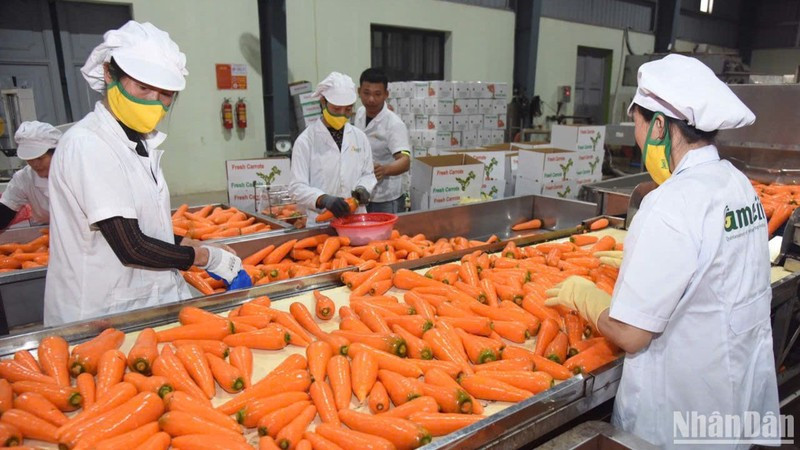It is forecast that Vietnam’s GDP in 2024 will drop by 0.15%, with agriculture recording the largest decrease at 0.33%, while industry and services will fall by 0.05% and 0.22% respectively.
The reason for the shrink in agriculture is that agricultural businesses, farms, and households have been severely hit by Typhoon Yagi.
Statistics show that in the first half of 2024, Vietnam’s agriculture grew by 3.38% — a high figure in the past five years. The goal for the whole year is 3.2-4%. With export revenue of 40.08 billion USD in the first eight months of 2024, the agricultural sector was targeting total export revenue of 57-58 billion USD for all of 2024.
However, Typhoon Yagi has left devastating consequences for agriculture, especially animal husbandry and aquafarming — the sector’s fastest-growing industries — placing great pressure on the task of maintaining the overall growth target.
For years, agriculture has always acted as a pillar of the economy. Therefore, in face of current difficulties, prompt and effective measures are needed to restore production and stabilise export. On September 17, the government issued a resolution on measures to deal with the consequences of Typhoon Yagi, quickly stabilise the people’s situation, foster the restoration of production and business, actively push for economic growth, and keep inflation in check.
For its part, the Ministry of Agriculture and Rural Development is working to restore agricultural production immediately after the storm and flooding are over. The ministry is gathering reports so as to introduce necessary support in terms of seeds, feeds, chemicals and other materials for localities to restore agricultural production.
For export, it is necessary to diversify markets and supply chains, capitalise on the opportunities from key export markets and the signed free trade agreements, promote the signing of new trade pacts, and expand into new markets such as the Middle East and Africa.
To ensure that the export supply chain is not interrupted, the Ministry of Industry and Trade should research and propose policies to support the rapid recovery of logistics facilities and warehouses damaged by the typhoon. Measures on reducing taxes, fees and rent are also needed for farming households and businesses that have been affected by the typhoon, flooding and landslides.
At the same time, the State Bank of Vietnam should direct credit institutions to consider support measures for their affected customers, such as reducing interest rates, restructuring debt payment and building new credit programmes for agriculture to help the sector restore production.
















